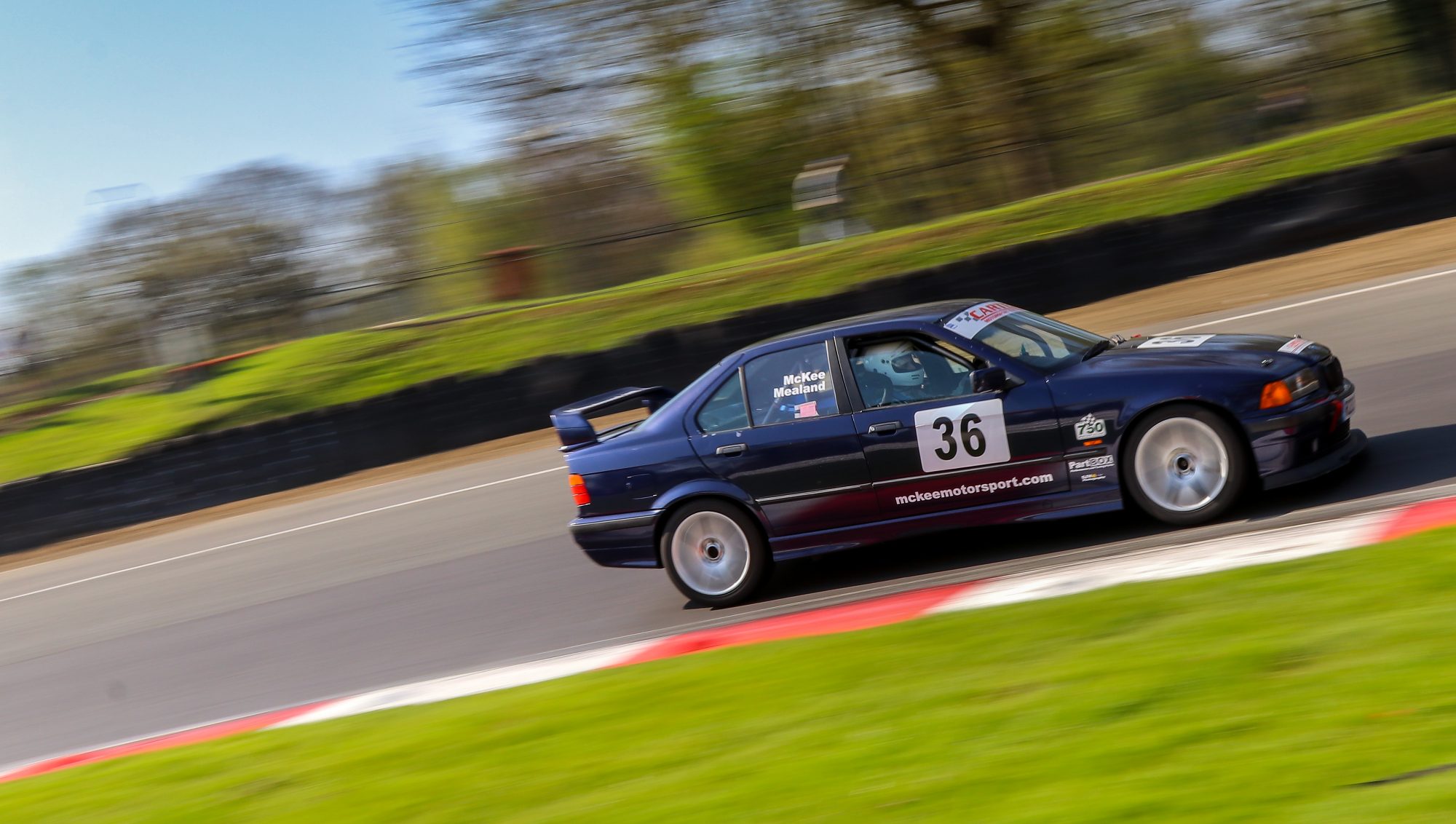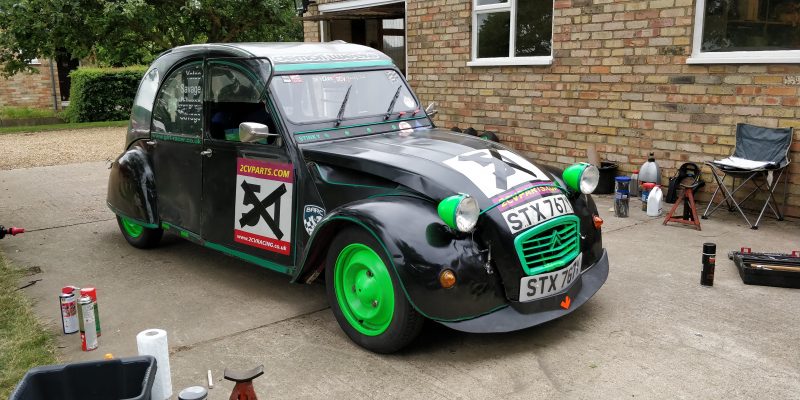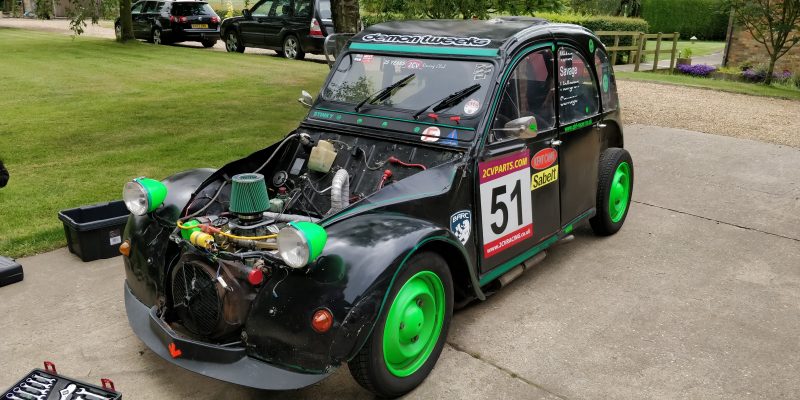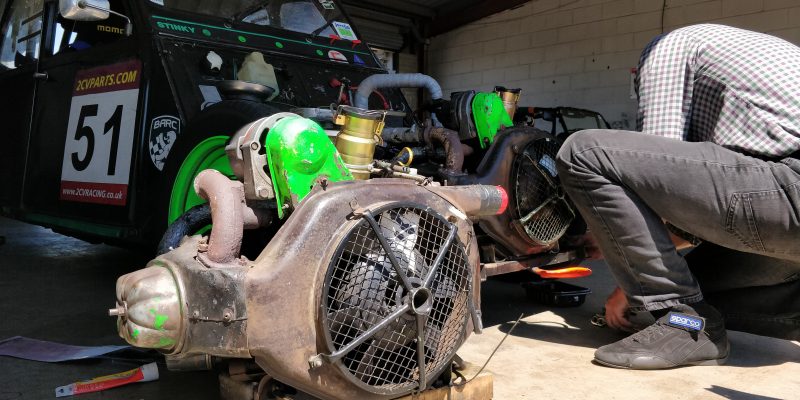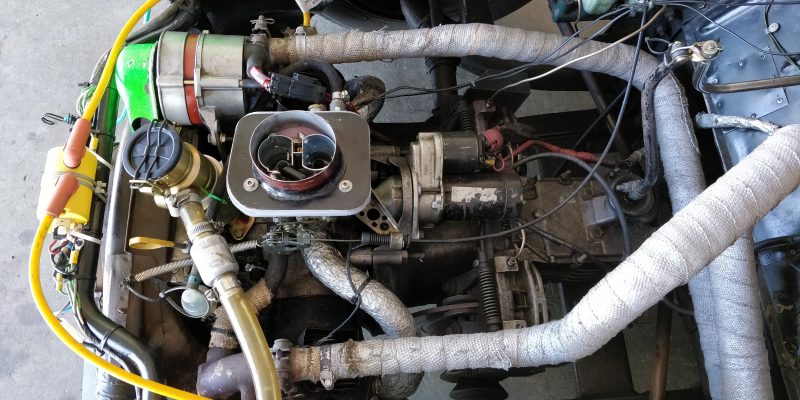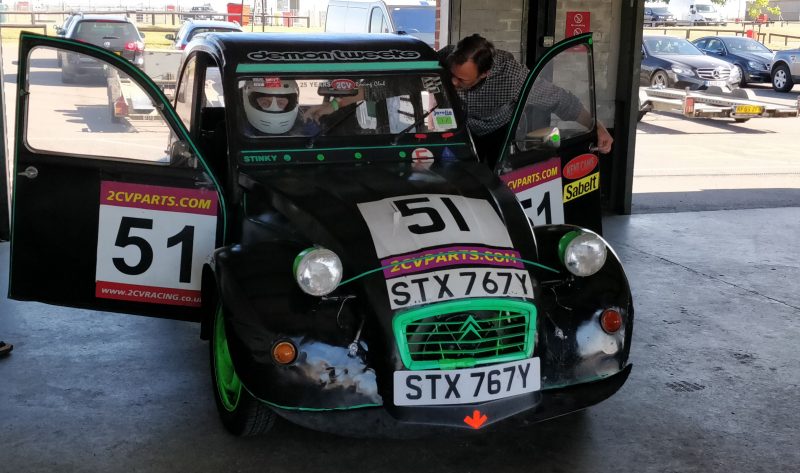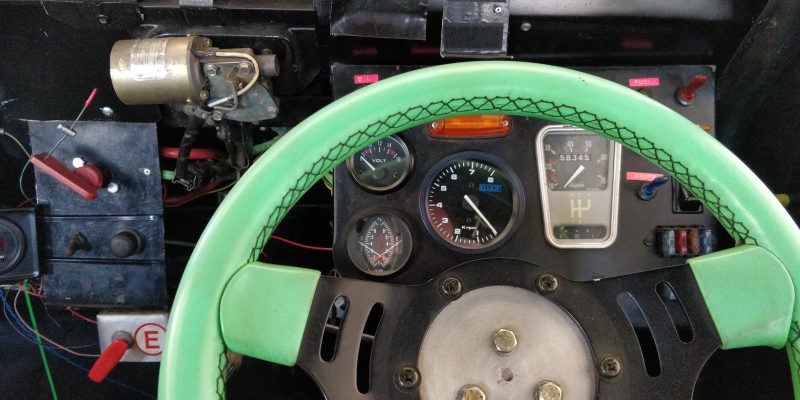One of the wonderful things about motorsport is that the community is very open, very inclusive and very willing to share. Nowhere is this more true than when a friend offers you a drive in another car, which is exactly what’s happened to me – but no ordinary racing car.
I’m delighted to announce that, come August, I’ll be entering the annual Classic 2CV Racing Club 24hr Race with Team Stinky*, running the car you see here. The car has been owned and raced by Christine Savage for the last 21 years, and has won the 24hr in the past. My entry into the team came via her brother Neil, who you may recall being my nemesis through my years competing in sprints in my E36. It’s always a great compliment to be trusted with someone else’s racing car, but in such a long race where consistent pace is so important, that’s even more true. Between Christine, Neil and Graeme Smith, I’ll be sharing the car with three very experienced 2CV racers so expectations are high – and I can’t actually remember the last time I drove a front-wheel-drive car on a circuit!
*the car smells just fine, but was christened Stinky almost immediately on account of its number plate – and yes, it is still road legal and has been driven to races in the past, so it qualifies the McKee Motorsport principles!
One of the first things you notice about the 2CV is how bizarrely well-suited to racing it is. It’s simple and lightweight, its panels are thin and easily battered back into shape, and any of them can be removed in a matter of seconds. The engine, a 602cc flat twin, can be comfortably lifted by one person and it’s already geared quite optimally for circuit use. Naturally there are a whole host of modifications, most of which are covered on the 2CV Racing Club’s website here, but its layout is still very true to the original – it’s no silhouette racer.
The air-cooled engine is fed by a control carburettor, revs to 7000rpm and produces around 45bhp, enough to propel the 650kg car to a top speed of 80mph in clean air – somewhat more if you’re tucked in the draft of competitor! Most teams carry several engines, and in case of a failure an experienced team can replace it in under ten minutes. The 24hr has been won by teams who had to do an engine change mid-race!
The tyres are control Toyo road tyres, in 135-section. These are perhaps my favourite feature. Despite that the car can corner and brake at 1g on these tyres, they quite literally last all day – it’s possible to do an entire 24hr on one set. If it’s dry all race and you drive it hard, you might need to change the front left. Once. For someone who’s used to tyres being the biggest worry and largest budget-eater, this is a wonderful new world!
Equally wonderful is the fuel consumption through this little Weber. Teams are limited to only adding 20L of fuel per pitstop, but despite Snetterton circuit being over 95% flat-out in this car, that’s good for two hours – even longer if it’s wet, or you have a good draft from other cars. The fuel warning light in our car comes on when there’s six litres left, and then it’s the driver’s call whether to come into the pits. If you’re in a good groove and putting in quick times, you could stay out for another fifteen laps and still have a litre in reserve.
With a lot of preparation and testing to do on the car, and with me very keen to find out what it’s like, we’ve already done a track day at Snetterton. I had no real idea what to expect, even having watched videos of the car being raced in the past, but I was in for a real treat. It’s brilliant fun. It’s amazing how little an issue the lack of power actually feels – you’re still doing all the normal tasks of planning ahead, spotting your markers, getting the downshifts perfect, balancing the car, using all the space available and conserving as much momentum as possible. If anything, having a short break on the straights once you’re in fourth gear is quite pleasant and gives you time to analyse your last few corners and take lessons into the next. That’s a luxury we won’t often have during the race, with drafting and traffic management being absolutely key, the straights will be just as busy as the corners!
I was really pleased with how the car handles, thanks to decades of development work that’s gone into it, and it inspires quite a lot of confidence. You can commit to many corners flat out, and drive the car right to and beyond the limit knowing that it’s low-inertia and very responsive, so any slip can be quickly managed. It seems to really enjoy being thrown at lower-speed corners, and getting the perfect line through faster ones to minimise tyre scrub is very satisfying.
Here’s how it looks from onboard:
Stay tuned for more updates as the race approaches!
Sam
